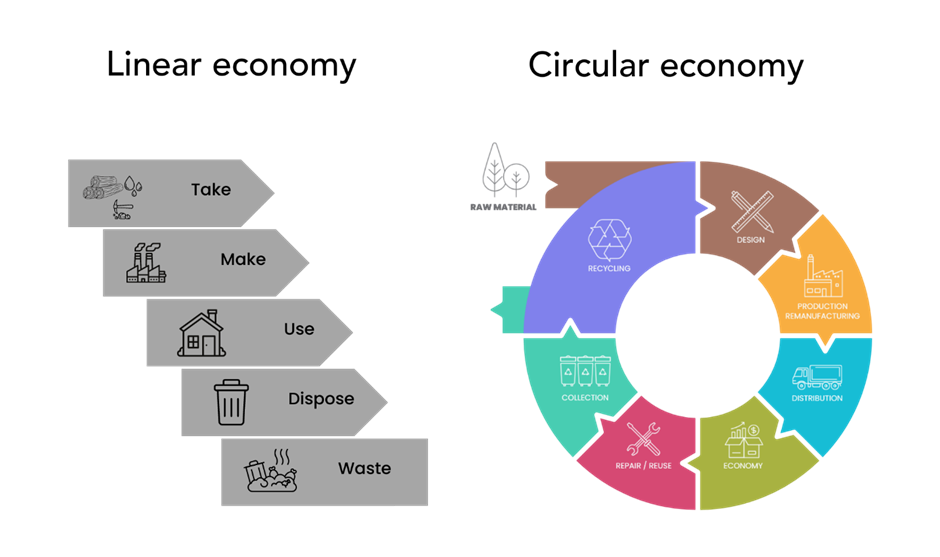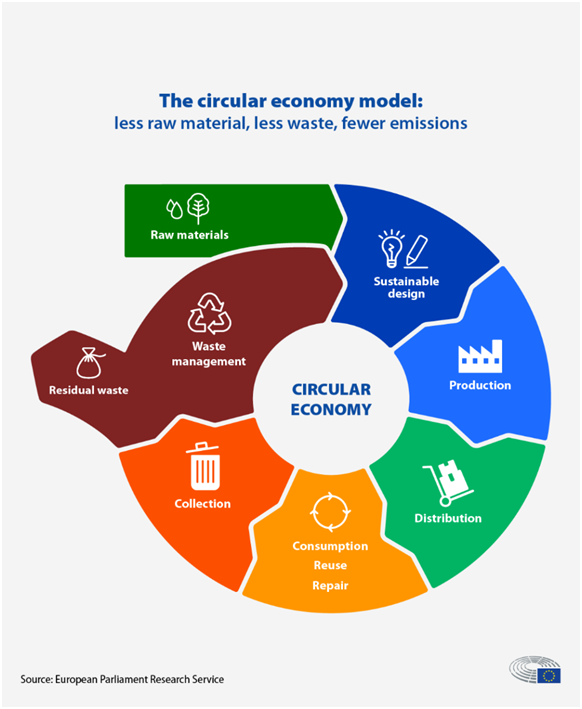Circular Economy vs Linear Economy – Understanding the Difference
To understand what a Circular Economy is and why it is so important in protecting the environment, it is first necessary to understand what a Linear Economy is.
What is a linear economy?
A Linear Economy is a system by which people buy a product, use it for a period of time, and then dispose of it. The term ‘linear’ refers to the straight progression that a lifecycle of product follows i.e. there is beginning, a middle and an end. There is little or no thought given in the process to recycling or reuse. This model is often characterized by a high volume of new manufacturing – geared to high profits.
The biggest problem with operating a Linear Economy is that it is a polluting system that destroys nature, adversely affects the climate and causes a loss of biodiversity.


What is the circular economy?
The Circular Economy is a model of production and consumption that involves sharing, leasing, reusing, repairing, refurbishing and recycling existing materials and products for as long as possible in order to ensure that the life cycle of products is extended, and waste is reduced to a minimum. When a product reaches the end of its life, its materials and components are kept within the economy wherever possible due to recycling.
This is a significant departure from the traditional linear economic model. This ‘take, makes, use, waste’ model relies on large quantities of cheap, easily accessible materials and energy and leaves the burden of dealing with the waste to others. Part of this model is ‘planned obsolescence’ i.e. a product has been specifically designed to have a limited lifespan to encourage a failure of the product at some point in the not-too-distant future and consumers to have buy it again.

